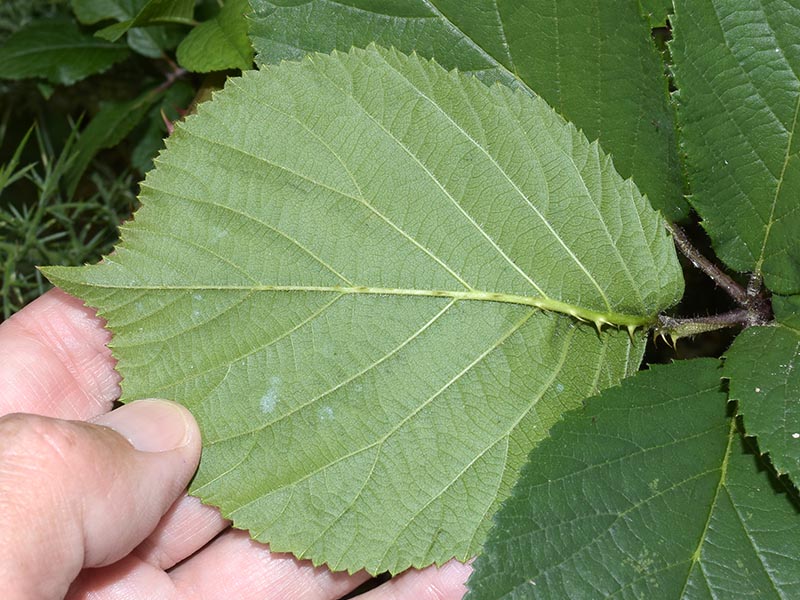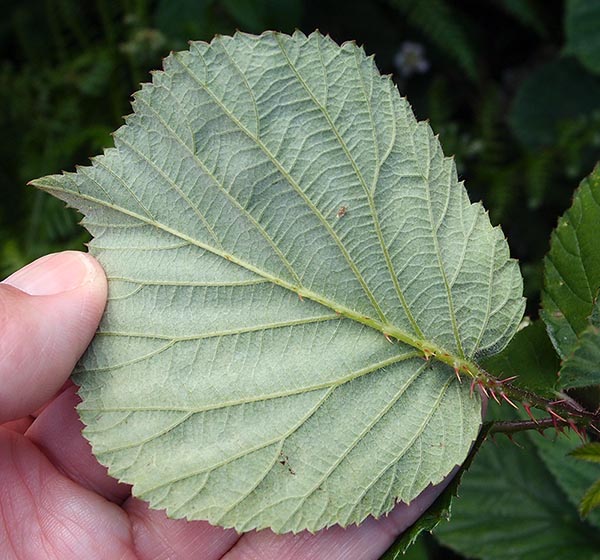
Rubus morganwgensis – Series Anisacanthi
back to Alphabetical index · Taxonomic index
A local endemic species more or less restricted to the Welsh county of Glamorgan after which it was named, but there are a handful of more scattered records. It was discovered in Gosport, Hampshire by Rubus expert David Allen (pictured below) and myself in 2012, though initially was mis-identified as R. pascuorum, a similar species in the same series. It was growing at the edge of an exceptionally rich bramble woodland in an area recently cleared of gorse. It was still surviving here in 2015 even though the gorse had grown up again. Subsequently it became more difficult to find, but a new bush appeared nearby next to a footpath in 2020. The key features of this bramble are the pale pink notched petals, strongly glandular inflorescence, broadly obovate terminal leaflet (grey-felted below) and the shining stems with variable sized prickles all round.

The inflorescence is a compact cluster of flowers on short, thick, divergent branches. Petals are pale pink but can fade to almost white in sun and are about 13 x 7mm. Most have a distinct notch at the tip. They are elliptical to slightly obovate in shape, narrowing gradually to the base. Stamens are longer than the styles, which sometimes develop a red tinge below.



The rachis and floral branches have frequent long fine prickles and numerous red-tipped long-stalked glands and acicles. Sepals are long and finely-pointed, also with noticeable red glands. They are patent in freshly opened flowers but gradually rise up and may loosely clasp the fruit as it develops. A few have long, leafy tips.




Leaves have 3–5 leaflets which are yellowish green to dark green and glabrous above, flat and not strongly textured. Leaflets often overlap slightly. The terminal leaflet is obovate but varies in relative width (narrower in younger leaves). Larger ones are about 8 x 6cm. It is sharply and fairly shallowly serrate with an abrupt (cuspidate) tip about 1cm long and an entire
(more or less rounded) base.




Leaflets are thinly pubescent below, but can become strongly yellowish-grey felted.



Stems have long, fine prickles of varying size and density which occur all round as is typical for the series. The stem is roundish to bluntly angled in section. Prickles are slightly angled to gently curving. Stems are shiny green, becoming tinged browish red in the sun, and the prickles develop bright crimson centres which contrast strongly with the stem.


Sparse hairs and a whitish pruinose coating may be present (both visible in the photo below).
